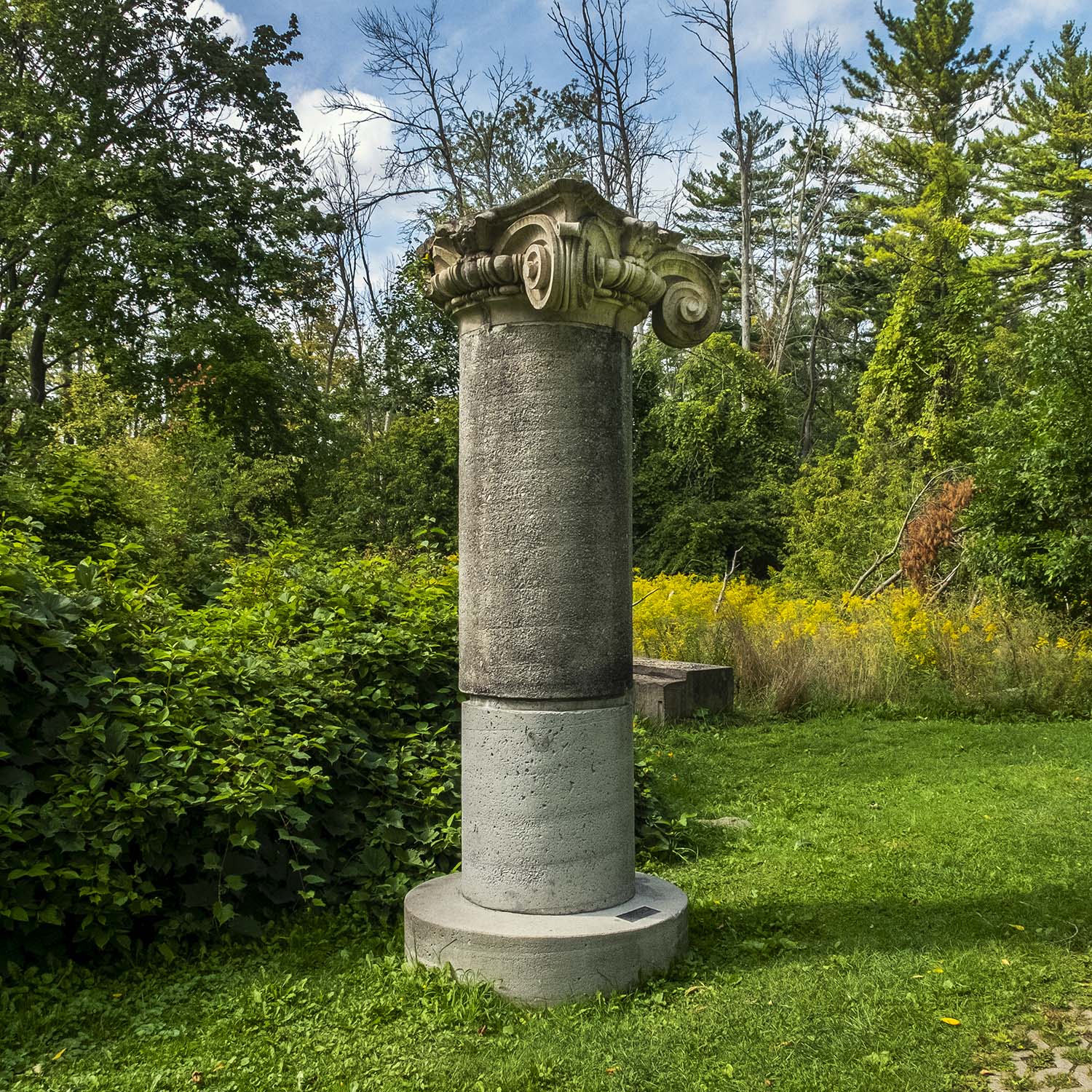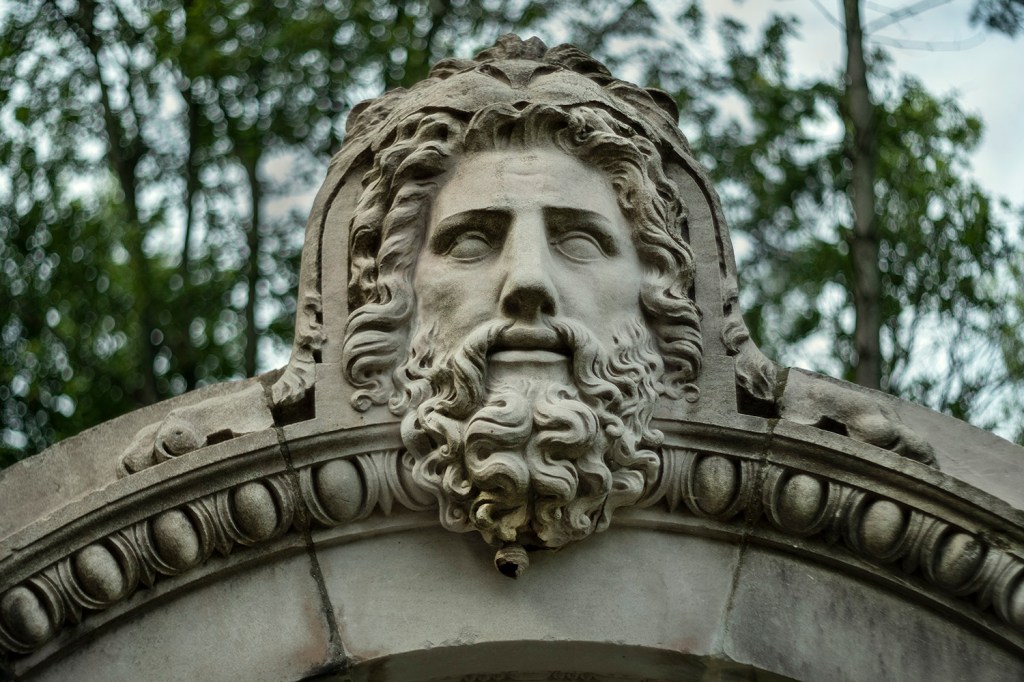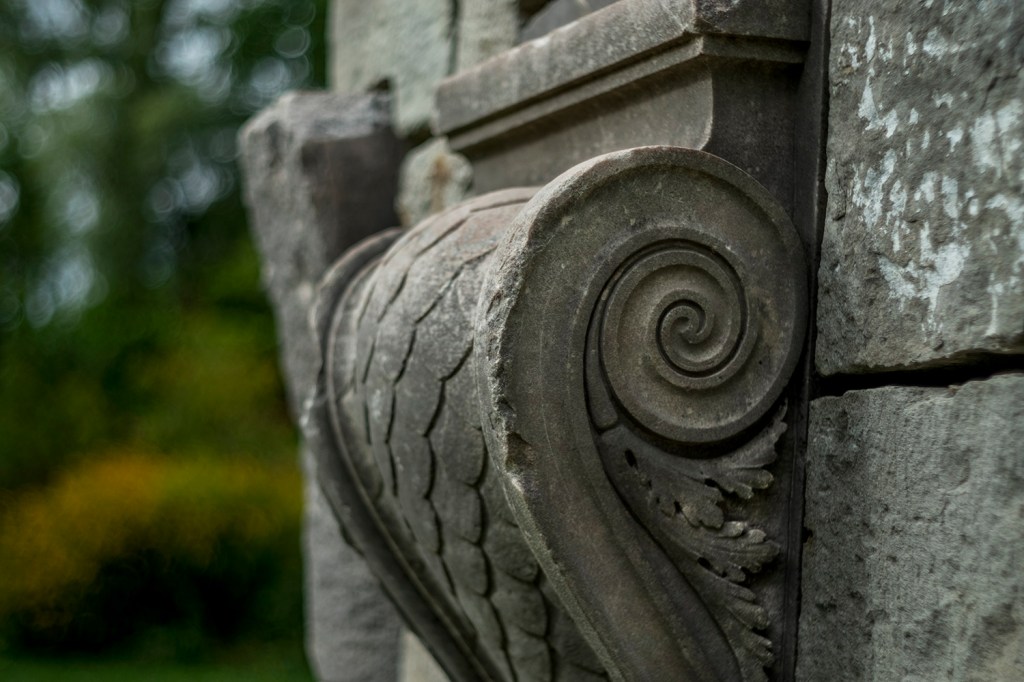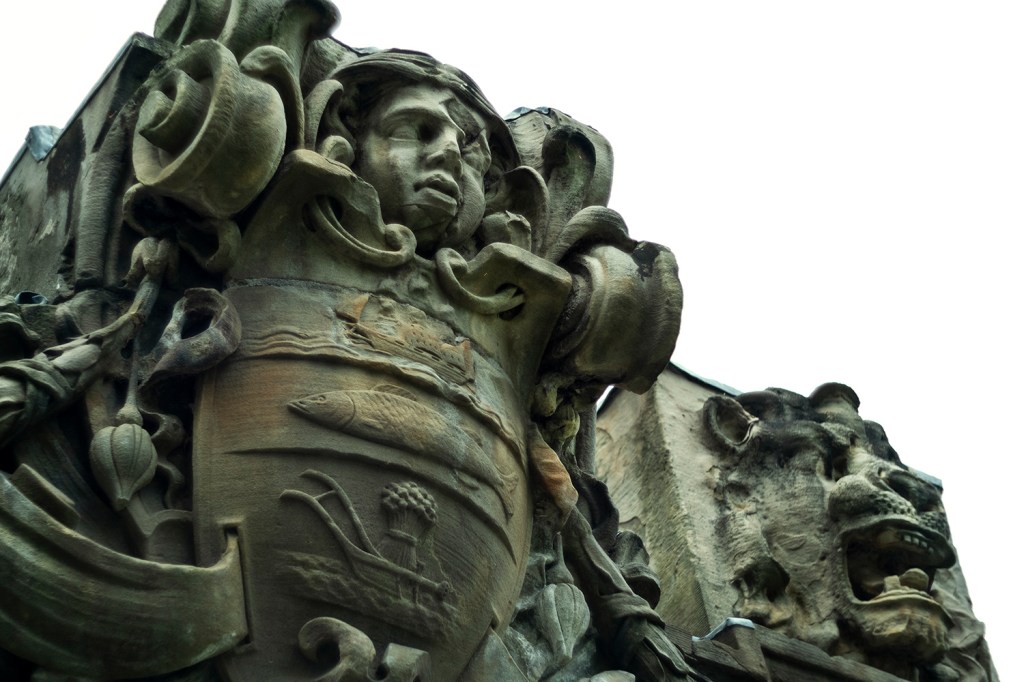THE SCULPTURE GARDEN AT SCARBOROUGH’S GUILD PARK IS UNIQUE. Honestly, I can’t think of another city with a public park that’s a testament to the architectural decimation of its historic buildings over several decades. As a traveler obsessed with history and heritage, I’m glad that it’s there, but part of me wishes that it didn’t have to be, or that it was located in another city.
The park began as Guildwood, a 400 acre estate and home built for Col. Harold C. Bickford in 1914. It was bought by Rosa Breithaupt Hewetson in 1932, and after her marriage to Spencer Clark, the couple decided to open an artist’s colony along the lines of Roycroft in upstate New York. During the Second World War, it was requisitioned by the government as a training base for the Women’s Royal Naval Service and a military hospital for shellshock victims.
When Hewetson and Clark returned after the war, they began collecting the architectural salvage from dozens of buildings being demolished all over downtown Toronto. In the rush of postwar prosperity, and with the official approval of city council, developers were wiping out bank buildings, office towers and other structures that were barely a few decades old. Sometimes they would be replaced with new towers in the International Style so popular with corporations, but often they were just leveled for parking lots.
With the help of engineers, architects and the stonemason Arthur Hibberd, Hewetson and Clark began turning their growing collection of stone and terracotta architectural castoffs into a series of monuments and follies all over the grounds of their estate. The remains of over sixty buildings ended up on the grounds of what was, by the time it was sold to the city in 1978, being run as a hotel by Clark.
The city took over the management of the property in 1983, and closed down the hotel in 2002, renovating and replacing it with an event space that’s a popular wedding location. They also turned the rest of the property into a fifty acre public park, which includes woodland, walking trails and the Osterhout Cabin, a log cabin whose origins remain mysterious, acquired by Hewetson and Clark with the rest of the property.
Lore and local legend says it was commissioned by John Graves Simcoe, the governor of Upper Canada, and built in 1795, or at some time after that by a succession of owners, like United Empire Loyalist William Osterhout. There’s no record of anyone living in a cabin on the site until after 1845, so the cabin really shares the same function as the other monuments in the park – as a folly, wistfully evoking an ever-receding past.
I really regret not visiting Guild Park until the travel lockdown. The story behind how all this stonework ended up here is a sad one, to be sure, and it’s remarkable to be able to get up close with the work of long-dead master sculptors and stonemasons. The iconic “Greek Theatre” installation (at the top), assembled from the remains of Bank of Toronto building (built 1912, demolished 1965), is certainly impressive, and it’s wonderful to be able to take in all the capitols, pediments, cornices and other stone remnants that once sat many storeys above the ground and nearly impossible to appreciate. It’s no wonder the city considers Guild Park to be an open-air art gallery.




The steel and glass towers that replaced all these bank headquarters, schools, corporate and government offices, mansions and homes have been standing now for as long or longer than the far more solid and distinctive buildings they replaced. Guild Park is a lovely place for a melancholy wander; make sure you look for the little brass plaques that give the origin of each assemblage of salvaged artistry.
But when I look at something like the ziggurat of limestone blocks and granite panels that are all that’s left of the old art deco Toronto Star building (built 1929, demolished 1972), I can’t help but mourn the much lovelier city for which Guild Park is a memorial, even a graveyard. I’m grateful to Hewetson and Clark for their eccentric mission to preserve the past, and the city for deciding – perhaps in belated contrition – to maintain the park. But it’s hard not to wish that all of these stones were still in place, decorating a far prettier city.

Finally, it’s worth noting that Guild Park is just one of a series of parks along the Scarborough Bluffs, and that while you admire the artwork, you’re only a few dozen metres away from the edge of the cliffs. The lake can be glimpsed through the trees, but the paths by the precipice have been fenced off by the city due to the instability of the Bluffs. Another reminder that time and nature is as pitiless as city hall.
Photos and story © 2020 Rick McGinnis All Rights Reserved










Thanks Rick! I had no idea this even existed. It is good that some of the art that was common in commercial buildings was saved. Now will we save the glass that makes up ‘modern’ edifices for future generations to marvel at? Somehow I doubt it.
LikeLike
Steel I-beams. Just plant them like a forest.
LikeLike
I always loved this park and the parts of building- I think around 1986 I was in a theatre group who used the cover photo shot location as our stage to present the play. Then would visit often up until I moved from Toronto in 1998.
LikeLike
[…] and permanent structures can become ruins in a city like Toronto. It’s a very pointed echo of Guild Park, and one of the smartest public art installations I’ve ever seen in this city. Try to see it […]
LikeLike
[…] here, and there was an outcry when their gates were briefly closed. Harder to get rid of than an old building, they’re our best examples of heritage districts, accidental repositories of city history and […]
LikeLike
I just discovered this article with great images about Guild Park. Thanks for describing the site and much of its background. There are a few points to clarify:
The Bickford estate in 1912 was originally called Ranleigh Park. The Guildwood name came into use in the 1950s. That’s when the Clarks developed the community built in the woods adjacent to their Guild Inn and called in Guildwood Village.
The log cabin at Guild Park was extensively studied by historians from Metro Toronto in the 1990s (before Toronto’s amalgamation). They conclusively found that cabin had been built in the 1850s by a pioneer farming family, the Humphreys. William Osterhout, nor anyone earlier, had anything to do with the building this cabin. Osterhout had been granted the land where the cabin now is, but he never settled on the site. Attaching the Osterhout name to the cabin is inaccurate (an inaccuracy that is repeared in the descriptive plaque nearby).
Ownership of today’s 88-acre Guild Park remains with the Toronto & Region Conservation Authority (TRCA). The City of Toronto manages and operates most of the site under a long-term agrrement with the TRCA. The Clarks sold this property to the Province of Ontario in 1978 and the conservation authority, which was then a provincial agency, took charge of the site.
I hope these details help add to everyone’s appreciation of historic Guild Park, where art meets nature. From John Mason, President, Friends of Guild Park. Dec 27, 2020.
LikeLike
[…] comic. It was demolished in 1970, but a handful of stones were salvaged and put on display in the Guild Park gardens in Scarborough, alongside other scraps from Toronto’s architectural […]
LikeLike
Thiss was great to read
LikeLike